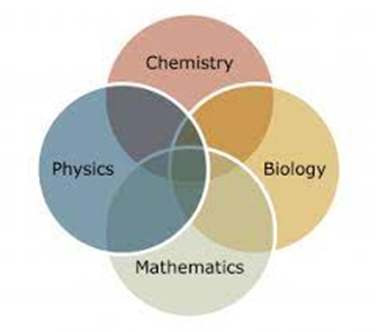Example from Brownian motion and the origin of thermodynamics observation of Robert Brown and Julius Mayor.
Brownian motion and the origin of thermodynamics
During microscopic research performed in 1827, Brown made his biggest discovery. While observing the sexual organs of plants under the microscope, the scientist found that pollen grains seemed to be darting around in a random manner Curious, Brown studied other substance under the microscope in search of the same movement. He discovered that if particles were of a certain size (or smaller), that the movement continued to occur. Brown observed the same movement in glass and rock particles, and theorized that the movement was not limited to living matter. The botanist conclude that the movement was caused by some phenomenon of physics and named the phenomenon “Brownian motion” in 1905, Albert Einstein suggested that Brownian motion was the result of the particles colliding with molecules. Noble prize winner, jean Perrin proved that Einstein’s thesis of Brownian motion was correct, Brown’s discovery provide the first evidence that proved the existence of atoms. The phenomenon of Brownian motion also led scientists to quantify Avagadro’s number- a physical constant for describing random motion.
Brownian motion is the continuous random movement of small particles suspended in a fluid, which arise from collisions with the fluid molecules.
Example of Brownian motion are:
01 The motion of pollen grains on still water.
02 Movement of dust motes in a room (although largely affected by air currents)
03 Diffusion of pollutants in air
04 Diffusion of calcium through bones
05 Movement of “holes” of electrical charge in semiconductors
Importance of Brownian Motion
The initial importance of defining and describing Brownian motion was that it supported the modern atomic theory, Today, the mathematical models that describe Brownian motion are used in mathematics, economics, engineering, physics, biology, chemistry, and a host of other disciplines.
Overview: Robert Mayer
In thermodynamics, Julius Robert Mayer (1814-1878) was a German physician and physicist notable for making one of the first statements of the conservation of energy and the mechanical equivalent of heat, namely that “motion is converted into heat” (184l), in contrast to the caloric theory, and for making a crude calculation of the latter.
Observation of Robert Mayer that led to the Concept of Thermodynamics
In 1840 Mayer was travelling in a ship destined for a roundtrip to Java. On this voyage two curiosities came to interest him. First, he was told by the navigator that during a storm the ocean water becomes warmer. This meant, to Mayer, that the converted into heat. A second note, observed by Mayer, was that during his bloodletting procedures he notice that the venous blood, which is normally a blue colored type of blood being carried in vessel from the capillaries towards the heart, was redder in color than expected.
Laws of Thermodynamics
01 The first law of thermodynamics is an extension of the law of conservation of energy
02 The second law can also be stated that heat flows spontaneously from a hot object to a cold object
Automobile engines, refrigerators, an air conditioners all work on the principles laid out by the second law of Thermodynamics. Ever wonder why you can’t cool your kitchen in the hot summer by leaving the refrigerator door open? Feel the air coming off the back-you heat the air outside to cool the air inside.
The Zeroth Law states that if A is in thermal equilibrium with B, and B is in equilibrium with C, then C is also in thermal equilibrium with A.
Examples of the First and Second Law of Thermodynamics
Melting ice cube:
Every day, ice needs to be maintained a temperature below the freezing point of water in remain solid. On hot summer days, however, people often take out a tray of ice to cool beverages. In the process, they witness the first and second laws of thermodynamics, For example someone might put an ice cube into a glass of warm lemonade and then forget to drink the beverage. An hour or two later, they will notice that the ice has melted but the temperature of the lemonade has cooled. This is because the total amount of heat in the system has remained the same, but has just gravitated towards equilibrium, where both the former ice cube and the lemonade are the same temperature. This is, of course, not a completely close system. The lemonade will eventually become warm again, as heat from the environment is transferred to the glass and its contents.





0 Comments